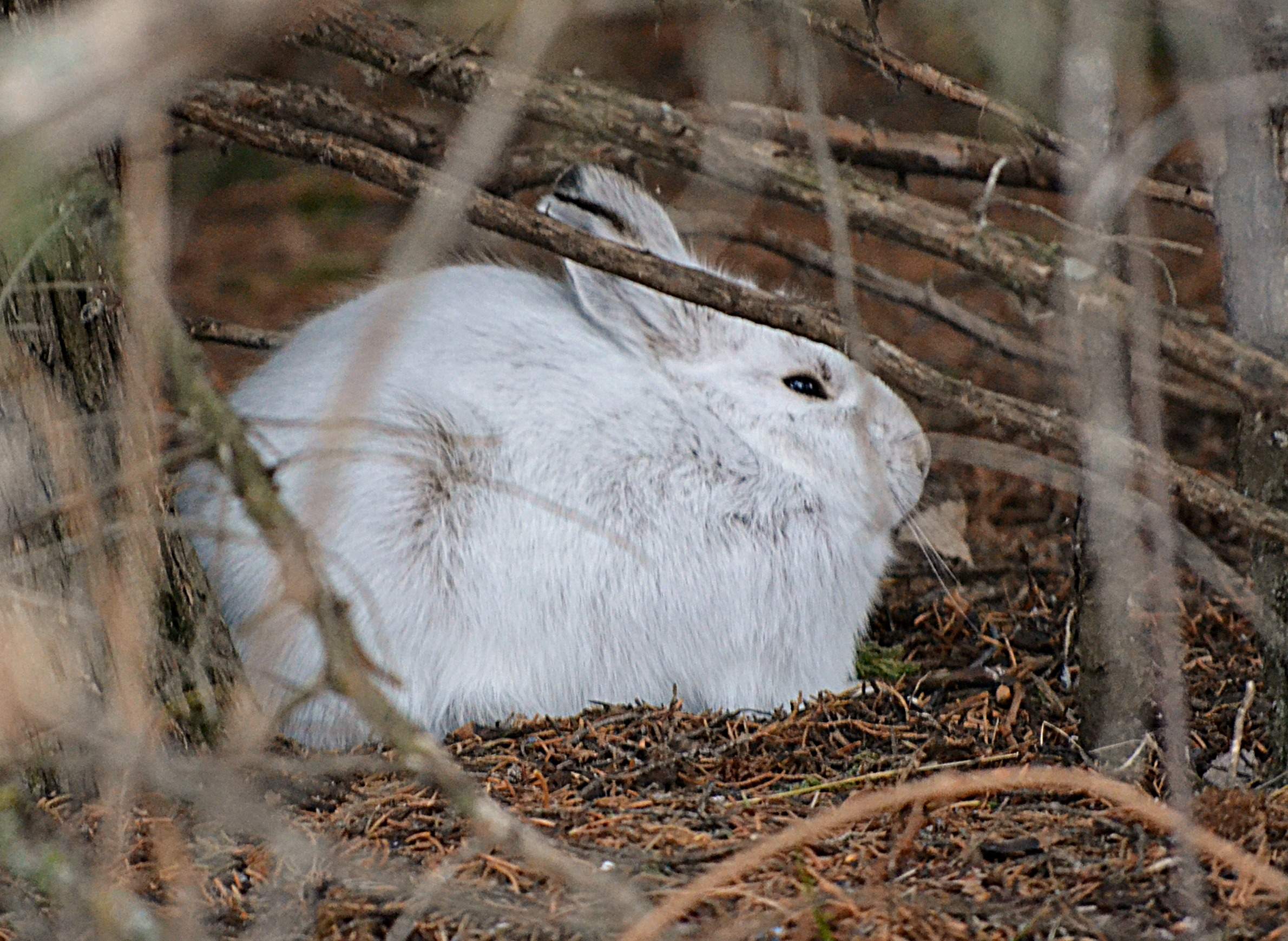
A snowshoe hare with white fur is visible on the bare forest floor.

A snowshoe hare with white fur is visible on the bare forest floor.
From hunting and fishing to boating and skiing, Wisconsin's outdoors beckon across all four seasons. The state's natural landscape creates recreational opportunities for residents and tourists alike, and plays an important role in the economy and livelihoods of many areas. But scientists anticipate that shifts in the global climate will affect the state's waters, wildlife and more in profound and perhaps unexpected ways.
Three University of Wisconsin-Madison scientists detailed some of the signs and impacts of climate change in an Oct. 18, 2014 presentation at the Wisconsin Science Festival that was recorded for Wisconsin Public Television's University Place. Each discussed the science of climate change, sharing a few examples of research into its impacts in the state and around the planet.
Galen McKinley, an associate professor in the Department of Atmospheric and Oceanic Sciences at UW-Madison, focused on the process of ocean acidification. Water with a lower pH can be inhospitable to various aquatic animals, particularly corals and shellfish that face bleaching and deterioration from the changing conditions. She illustrated the effect of more carbon dioxide dissolving in water by comparing the pH levels of regular and carbonated water, noting the latter is more acidic. Just as dissolved carbon dioxide is responsible for bubbles in cans of pop/soda, growing levels of this gas in the atmosphere contribute to acidification in ocean waters, and perhaps in the Great Lakes as well.
The Environmental Protection Agency does not specifically monitor for water acidification for its Great Lakes Enivironmental Database, nor do other scientists regularly. McKinley noted that inconsistent observation of pH levels in the Great Lakes makes it difficult to track the impact of growing carbon dioxide levels.
"The chemistry indicates it should be happening, but the monitoring is not really sufficient at this point, and so we really need some more pH data and data of better accuracy," she said. "That's what we hope to be able to begin collecting with some of the grants we're proposing now and in the near future."
Steve Vavrus, a senior scientist at the Center for Climatic Research in the UW-Madison Nelson Institute for Environmental Studies, discussed the effects of warmer temperatures in winter. For starters, long-term projections for Wisconsin's climate indicate the state can expect more days above freezing in winter. And while the winter of 2013-14 seemed unusually cold to many Wisconsinites, the preceding 15 winters were anomalous for their relative warmth and lack of snowfall.
While milder winters in Wisconsin may be hailed by would-be snowbird retirees and cursed by cross country skiers and snowmobilers, Vavrus pointed to the impact of warmer winter temperatures on a global scale. He said these effects are amplified in the Arctic, where areas that previously did not fully thaw are now proving more hospitable to plant life, and warming is occurring two to three times faster than the rest of the world.
"Glaciers and permafrost are thinning and melting and contributing to coastal erosion, coupled with the loss of buffering sea ice cover," he said. "You might think of the color of the Arctic changing from white in the past from snow and ice to more blue for the open ocean and green on land as vegetation expands."
Benjamin Zuckerberg, an associate professor in the Department of Forest and Wildlife Ecology at UW-Madison, discussed how winter sports enthusiasts are not the only Wisconsin residents who face disadvantages when warm weather keeps snow at bay. Many plant and animal species may adapt to changing conditions in their habitat or find new niches, but others may not.
The seasonal timing of biological phenomena among plants and animals is called phenology. One example can be found in the snowshoe hare, a mammal with fur that turns from brown to white as days shorten in autumn. But this species is finding its wintertime genetic adaptation is increasingly a liability, Zuckerberg explained.
"Frankly, if you're a snowshoe hare, there are a lot of things that like to eat you," he said. "The problem is you look like a light bulb running across a brown background."
Zuckerberg discussed how shifting seasonal changes are having impacts across the natural world, noting that changes in the timing of resource availability threaten many bird species.
Climate Wisconsin, a project of the Wisconsin Educational Communications Board, provides more specific information about the effects of climate change in the state, including looks at temperature changes and phenology.
Key Facts
Key Quotes